How Would a Lumber Crew Move a 2,000-Pound Log?
Roads
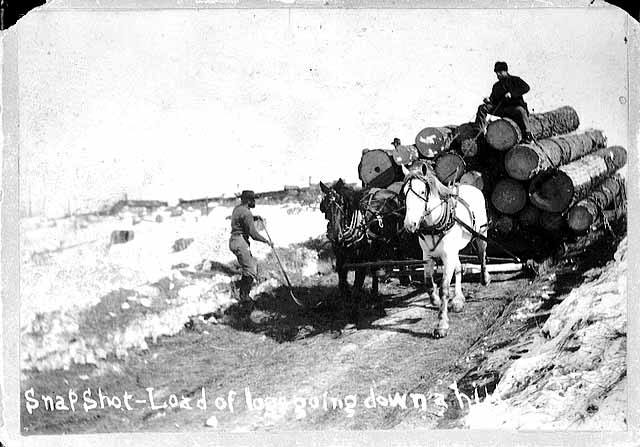
Load of logs going down hill, 1885.
Minnesota Historical Society Photograph Collection, Location No. HD5.31 r26, Negative No. 78641
"When the logging road had a steep down grade it was quite a trick to prevent the load from going too fast, which would either dump the load, or kill the horses, or both. Consequently, a 'road monkey' ran ahead of the horses with a bundle of hay in his arms which he threw in the ruts to 'brake' the load and keep it under control."
Joseph DeLaittre, A Story of Early Lumbering in Minnesota (Minneapolis: DeLaittre Dixon Co., 1969).
Loading
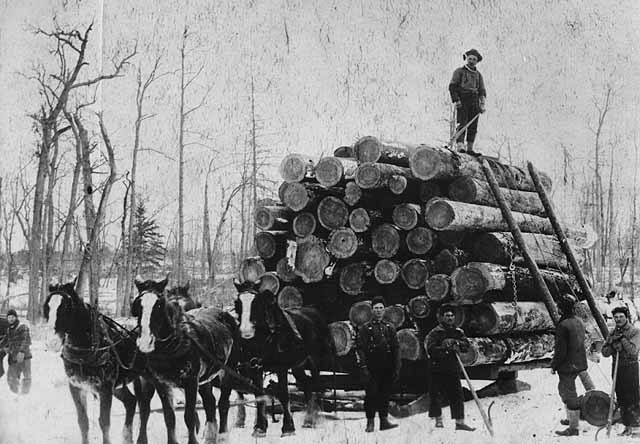
Loading logs at the Corner and Wilson logging company near Akeley, 1900.
Minnesota Historical Society Photograph Collection, Location no. HD5.31 p45 Negative no. 43629
"The logs were loaded on the sleds by means of a cross haul. A team pulled each log up parallel skids on to the sled. Two men with cant hooks controlled the position of the log as it mounted the skids; and another man, called the top loader, put each log in place on the load. Inasmuch as the logs weighed from a half ton to two tons each, this was no mean feat."
Joseph DeLaittre, A Story of Early Lumbering in Minnesota (Minneapolis: DeLaittre Dixon Co., 1969).
Sledding
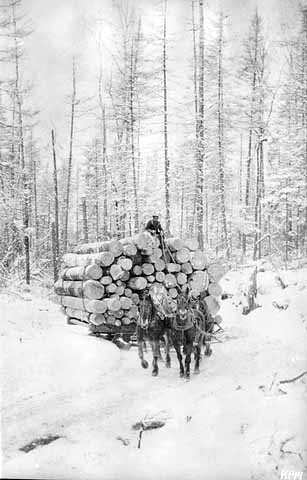
Load of logs, ca. 1900.
Minnesota Historical Society Photograph Collection, Location No. HD5.31 r58, Negative No. 1821-A
"The average load weighed 25 to 30 tons. 'Picture loads' were sometimes constructed of picked logs which scaled twice this much"
Joseph DeLaittre, A Story of Early Lumbering in Minnesota (Minneapolis: DeLaittre Dixon Co., 1969).
Teamsters
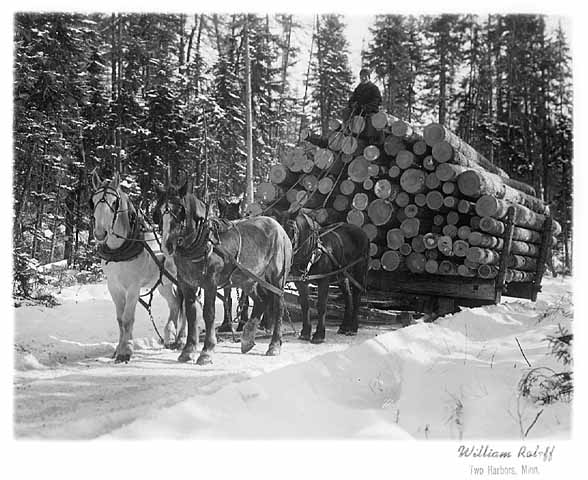
Horses pulling sled loaded with logs, 1916.
Photographer: William F. Roleff (1873-1943)
Minnesota Historical Society Photograph Collection, Location no. Album 95 Negative no. 3491-B
"There is an art other than logging which has reached an exalted degree of perfection in this section of the country and that is the use profanity.... I am swamping for a teamster who is an adept and when once thoroughly aroused can swear continuously for 15 minutes without the repetition of a single word. He is very impartial about it and nothing seems to escape his profane attention, the logs, the team, the chain, the weather, and the general management of the universe all receive their due here and he does it with accuracy and perfection of detail worthy of a much better cause. But in spite of his profanity he never curses the swampers and is a good man to work for...."
—Horace Glenn in a letter to his parents, March 10, 1901
Andrew W. Glenn and Family Papers. Minnesota Historical Society Manuscripts Collection, A/.G558
Unloading
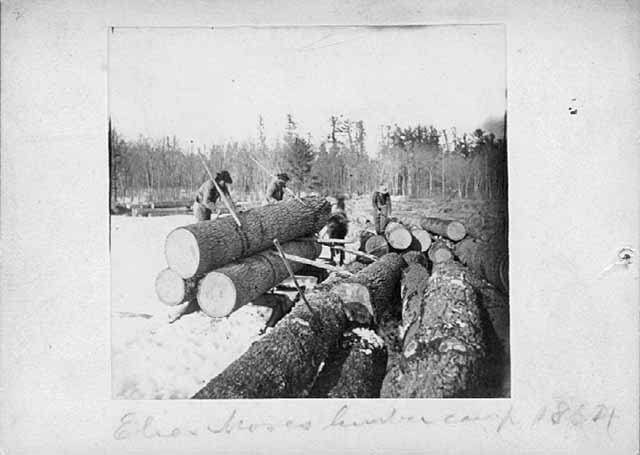
Men unloading logs from sled, Elias Moses lumber camp, 1864.
Minnesota Historical Society Photograph Collection, Location no. HD5.31 r12 Negative no. 1776
"It was a three mile haul to the Moose Lake landing where the logs were unloaded. The sleds were driven out on the lake and it took two men to unload the logs."
Joseph DeLaittre, A Story of Early Lumbering in Minnesota (Minneapolis: DeLaittre Dixon Co., 1969).

